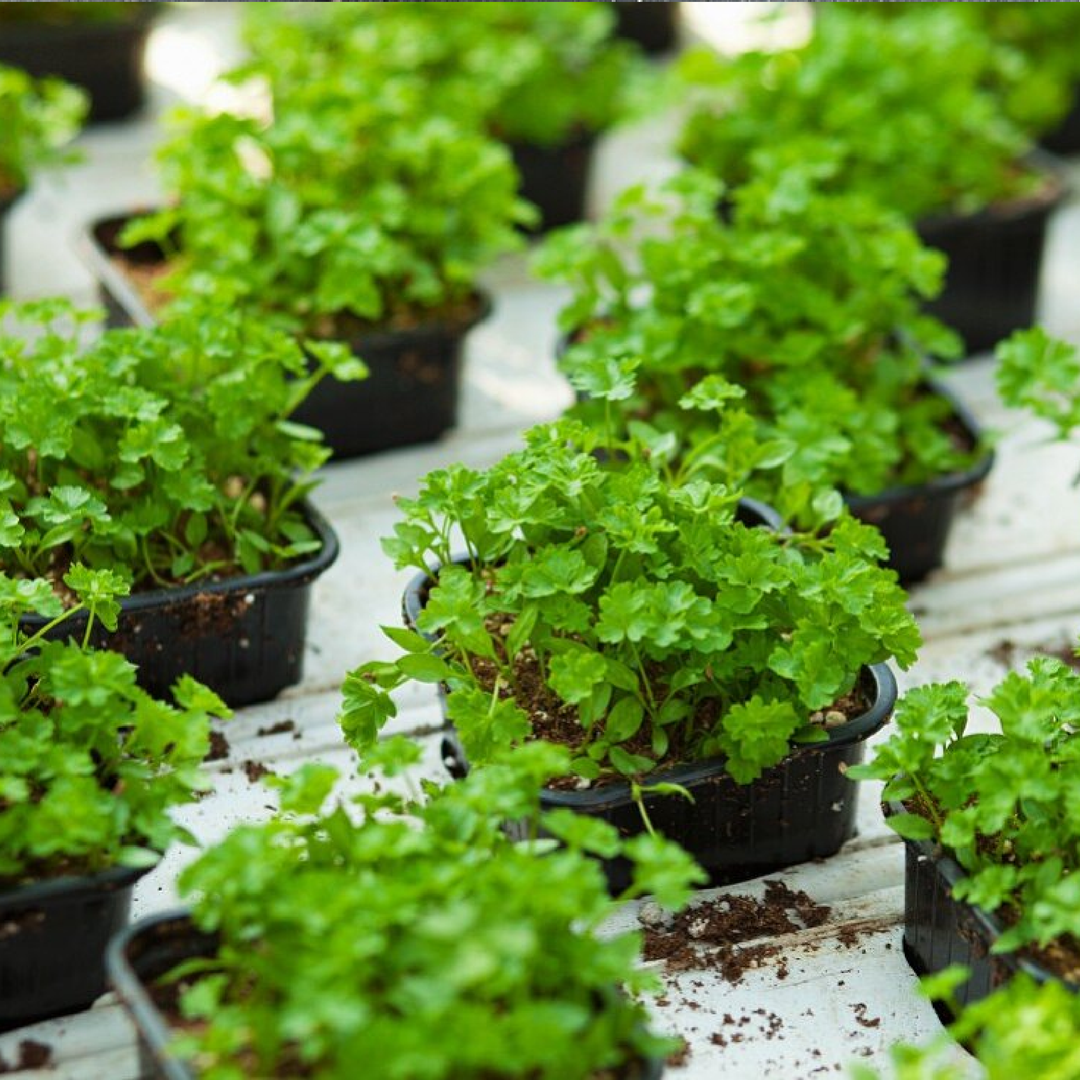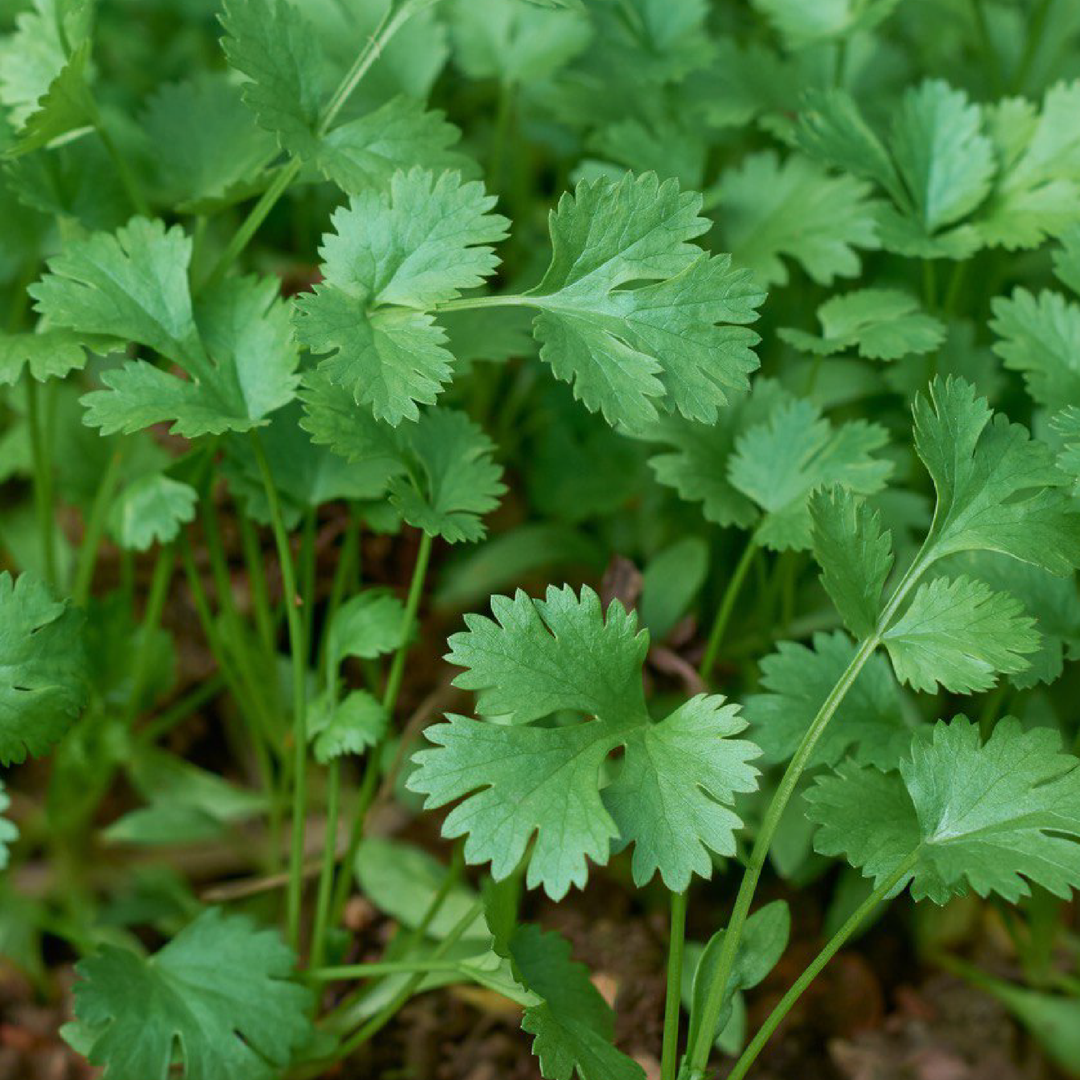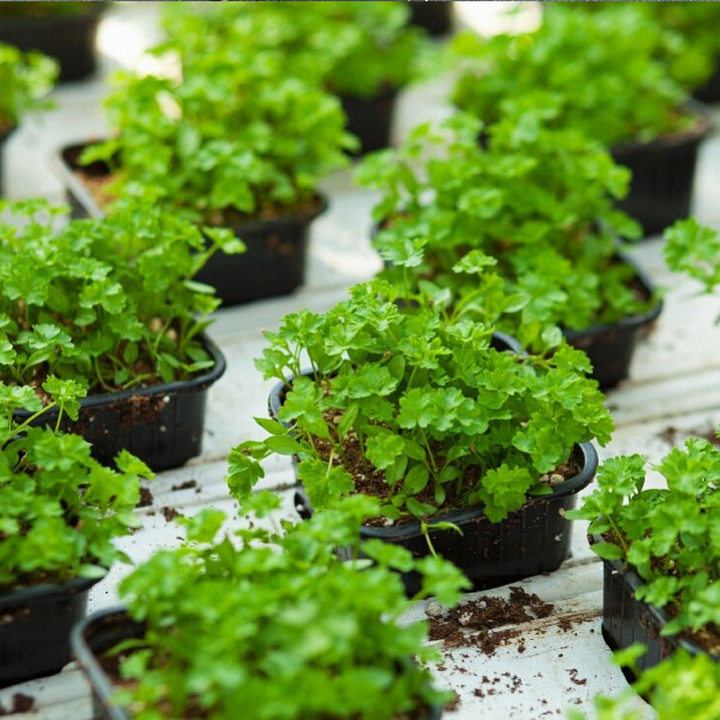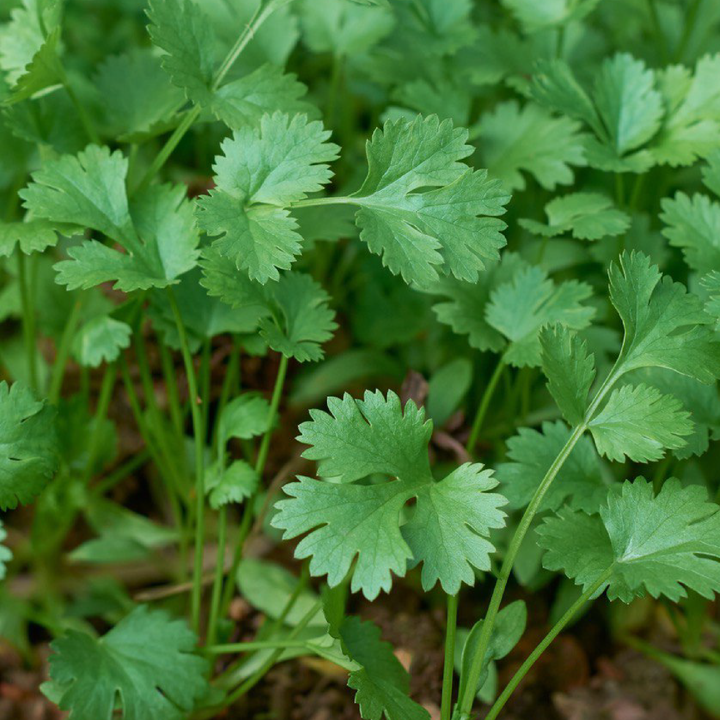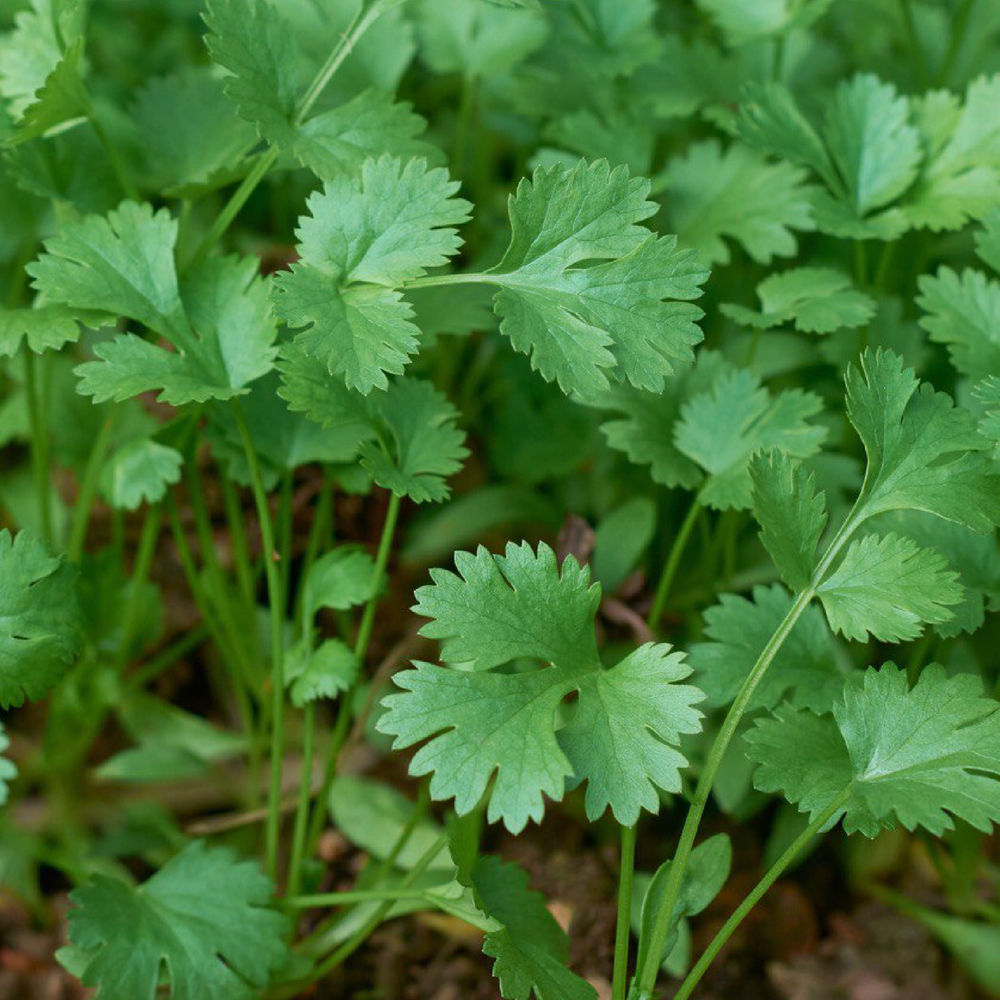CORIANDER SEEDS
بذور الكزبرة
- Shipping all over U.A.E
- Low stock - 5 items left
- Backordered, shipping soon
1. Growing Coriander Seeds
-
Choosing Seeds: Start with fresh coriander seeds, preferably organic. You can use whole coriander seeds from the spice aisle, but it's better to get seeds meant for planting.
-
Preparing the Soil: Coriander grows best in well-draining, fertile soil with a pH between 6.2 and 6.8. Loosen the soil to ensure proper aeration. You can also mix in compost or organic matter to enrich the soil.
-
Planting:
- Break the seeds slightly (gently crush them) to speed up germination.
- Plant seeds about 1/4 inch deep in rows or scattered. Space the seeds about 6-8 inches apart to give them enough room to grow.
- Cover lightly with soil and pat gently. Avoid planting too deep as it could delay germination.
-
Germination: Coriander seeds take about 7-10 days to germinate. Ensure that the soil stays moist during this time.
2. Caring for Coriander
-
Sunlight: Coriander prefers full sun but can also tolerate partial shade, especially in hotter climates. It needs at least 4-6 hours of direct sunlight daily for optimal growth.
-
Thinning: Once the seedlings are about 2 inches tall, thin them to about 6 inches apart to prevent overcrowding and ensure each plant has enough space to grow.
-
Fertilization: Feed the plants every 3-4 weeks with a balanced organic fertilizer or compost to promote healthy growth. Avoid over-fertilizing as it can cause excessive leaf growth but lower flavor quality.
-
Harvesting:
- You can start harvesting leaves once the plant reaches 4-6 inches tall. Snip the outer leaves, leaving the center intact for continued growth.
- If you're growing coriander for seeds, allow the plant to flower and form seeds. These seeds can be harvested once they turn brown and dry.
3. Watering Coriander
-
Initial Watering: Water the seeds immediately after planting to settle the soil. Keep the soil evenly moist but not waterlogged.
-
Regular Watering: Coriander needs consistent watering, especially during dry periods. Water the plants 2-3 times a week, ensuring the soil remains moist but not soggy. Reduce watering if the weather is cooler or if the plants are indoors.
-
Watering Tips:
- Water early in the morning or late in the evening to prevent evaporation.
- Avoid overhead watering, as it can lead to mildew or mold growth. Instead, water at the base of the plant.
4. Potting Coriander
-
Choosing a Pot: Use a pot that is at least 8-10 inches deep, as coriander has a long taproot. Ensure the pot has drainage holes to prevent waterlogging.
-
Soil for Pots: Use a well-draining potting mix, preferably with organic compost added. You can also mix in sand or perlite to improve drainage.
-
Planting in Pots:
- Fill the pot with potting mix, leaving about 1 inch of space from the rim.
- Sow the seeds the same way you would in the garden—plant them 1/4 inch deep and space them out evenly.
-
Care for Potted Coriander:
- Place the pot in a sunny spot where the plants will receive at least 4-6 hours of sunlight daily.
- Water regularly, as pots tend to dry out faster than garden soil.
5. Temperature and Climate for Coriander
-
Optimal Temperature: Coriander grows best in temperatures between 50°F and 85°F (10°C to 29°C). It prefers cooler weather but can tolerate a range of temperatures.
-
Avoiding Bolting:
- In temperatures above 85°F (29°C), coriander tends to "bolt," which means it quickly flowers and goes to seed. This usually results in bitter leaves.
- To prevent bolting in hot climates, provide some shade during the hottest part of the day or grow coriander in the spring and fall when temperatures are cooler.
-
Cold Protection: Coriander is somewhat frost-tolerant but should be protected from freezing temperatures. If you're growing coriander in a cooler climate, cover the plants during cold snaps or grow them in pots that can be moved indoors.
If you looking for a wide range on plants and Garden accessories. Feel Free to click here.
What we offer in this Package: 1g Coriander Seeds
Thank you for shopping with us! We aim to deliver your order as quickly and safely as possible.
- Processing Time: Orders are processed within 1-2 business days.
- Shipping Time: Delivery usually takes 3-5 business days, depending on your location.
- Tracking: Once your order is shipped, you’ll receive a tracking number via email to monitor your shipment.
- Shipping Costs: Shipping fees will be calculated at checkout based on your location and order size.
- Delays: Please note that during holidays or high-demand periods, there may be slight delays.
If you have any questions about your order, feel free to contact our support team. We’re here to help!


